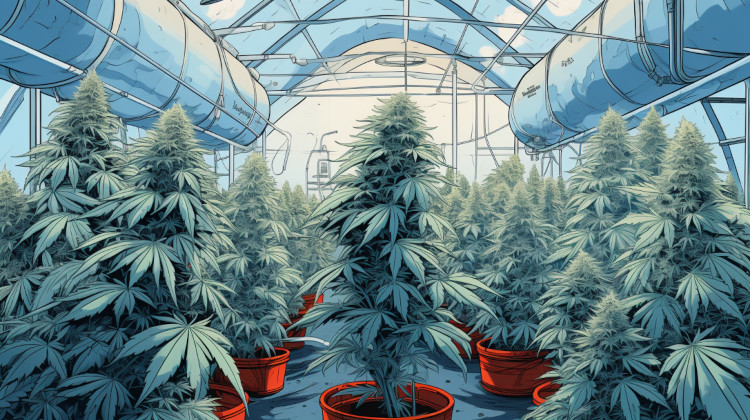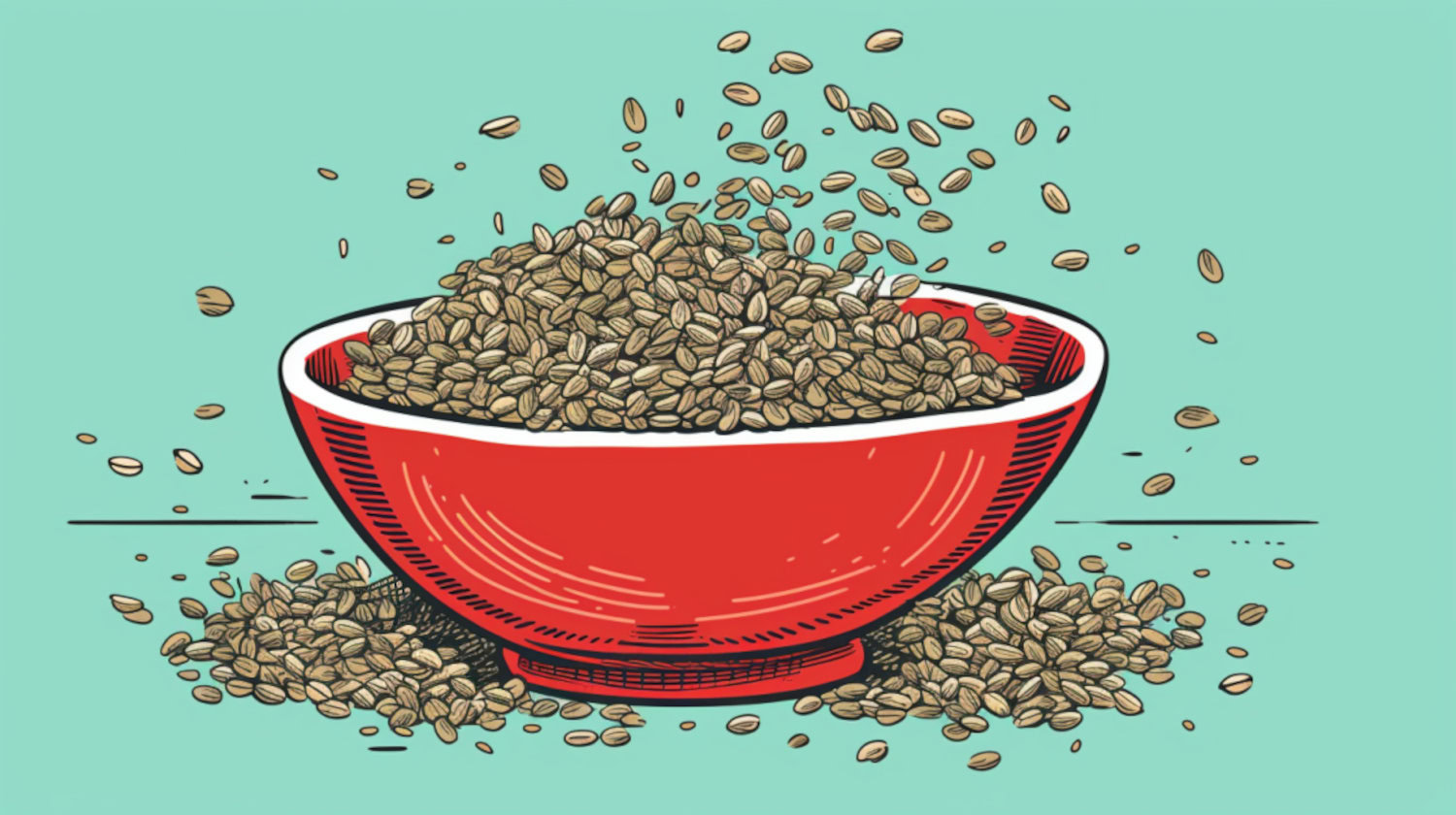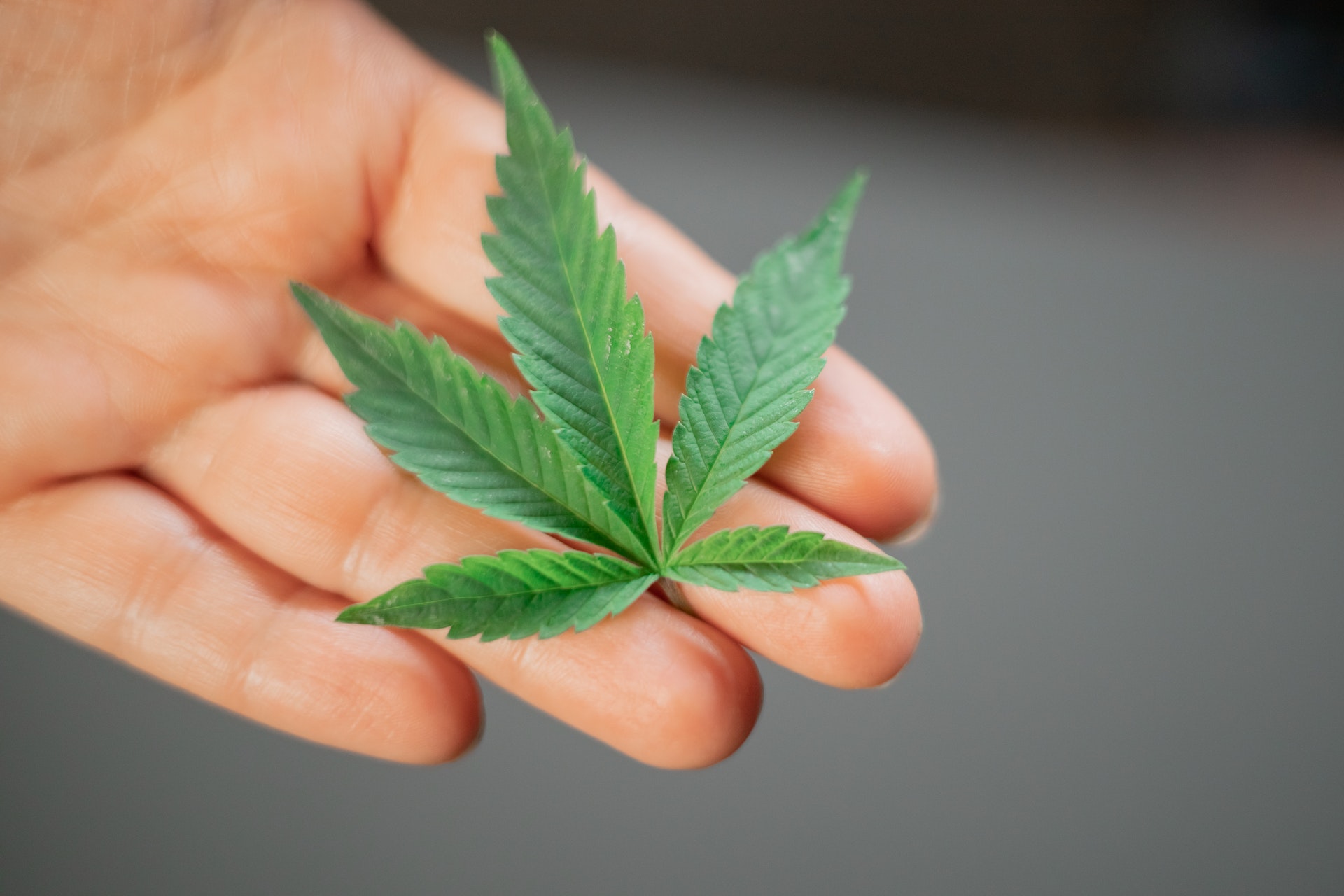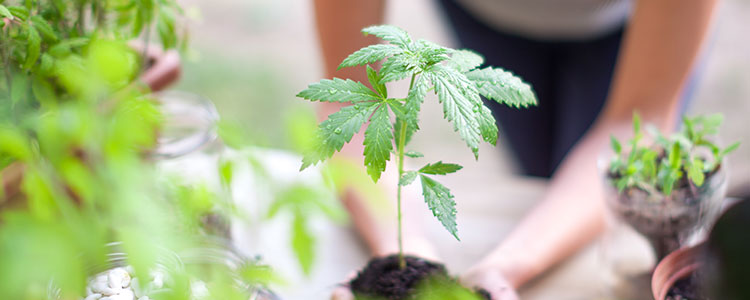In This Article
- What is Super Cropping?
- How Does Super Cropping Work?
- What are the Benefits of Super Cropping Weed?
- Encourages Vigorous Growth and Bud Development
- Boosts Resin Production and Potency
- Structural Support for Buds
- Greater Yield
- Optimized Limited Space
- Experimentation and Adaptation
- How to Successfully Implement Super Cropping
- When to Implement Super Cropping
- Indoor vs. Outdoor Cultivation
- Combining Techniques
- Step-By-Step Guide to Super Cropping Cannabis
- Step 1: Identify Suitable Branches
- Step 2: Choose the Right Time
- Step 3: Soften the Stem
- Step 4: Bend the Branch
- Step 5: Secure the Branch
- Step 6: Monitor Recovery
- Step 7: Assess and Adjust
- Step 8: Continue Regular Care
- Step 9: Harvest with Care
- Elevating Cannabis Cultivation
- References
Home cannabis cultivation offers numerous advantages, from ensuring the purity of your stash to providing a sense of accomplishment. Growing your own cannabis puts you in control, allowing you to determine cultivar quality and avoid commercial markup.
However, like any other agricultural venture, home cultivation has its own set of challenges. While the vision of flourishing plants with bountiful yields is appealing, the path to achieving this is not always straightforward.
Enter the world of super cropping, a game-changing cultivation technique. For those looking to push their cannabis growth to its fullest potential, super cropping stands out as an invaluable method. This technique addresses many challenges home growers face and significantly improves yields, making the most out of every plant.
Whether you’re a seasoned grower or a first-time grower, super cropping can be an effective strategy in ensuring your plants reach their optimal growth.
What is Super Cropping?
Super cropping is a revolutionary technique in cannabis cultivation that plays a critical role in shaping the plant and elevating its yield. Whether you’re a home grower nurturing your personal stash or a professional cultivator overseeing large-scale production, this is indispensable. It allows growers to control the plant’s height and shape while enhancing branch yields.
Super cropping is a high-stress training (HST) method, like topping, that differs from low-stress training (LST) techniques, such as the screen of green (SCROG) method. Super cropping involves strategically pinching the stem or branch, specifically in the area between the nodes, causing it to bend at a 90-degree angle or more.
Following this intentional damage, the plant enters a state of repair, leading to the formation of a hard, swollen callus at the bent section. This callus acts as a reinforcement, increasing the flow of nutrients and boosting the flower production of that particular branch.
How Does Super Cropping Work?

Super cropping leverages a cannabis plant's natural reaction to stress. When exposed to controlled stress, plants often accelerate their growth and nutrient distribution, ensuring their survival and reproduction.1 Pinching and bending a branch essentially triggers this response, causing the plant to redirect nutrients and growth hormones to the affected area.
This "controlled damage" induces the formation of the callus. This callus acts as a strengthened pathway, allowing an enhanced flow of nutrients to the branch. As a result, the flower production is increased. It's not just about increased yields, though. By super cropping, growers can also standardize the canopy height, ensuring that all plant tops receive equal light, which is crucial for the optimal growth of cannabis.
Anecdotal reports from growers suggest that the branches and stems become more robust post-super cropping. This is especially beneficial when the plant begins to flower, as stronger branches can support the weight of heavy buds. Moreover, the application of this technique during the pre-flowering stage can further prepare the plant for optimal yields, especially when combined with other cultivation techniques like LST, topping, or mainlining.
It’s essential, though, for growers to approach super cropping with knowledge and care. This technique can cause unwanted results if applied to unhealthy or pest-infested plants. But, when done right and in conjunction with superior cannabis seeds, super cropping promises incredible results, ensuring your cannabis plants reach their prime in terms of growth and yield.
What are the Benefits of Super Cropping Weed?
Super cropping weed is an HST technique that has become popular among cannabis cultivators who aim to maximize their yield and improve the quality of their crops. But what exactly are the benefits, and how does this technique improve cannabis plant growth? Let’s explore the advantages and impact of super cropping on overall yield.
Encourages Vigorous Growth and Bud Development
One of the primary benefits of super cropping is encouraging more vigorous vegetative growth and better bud development. This cultivation technique involves pinching and bending the plant’s branches to damage the inner fibers while preserving the outer layer, which might appear counterintuitive.
However, this form of stress actually helps the plants. In response to the damage inflicted, cannabis plants are believed to trigger their defense mechanisms, causing them to uptake more nutrients and fuel their growth. This process results in more robust plants with improved structural integrity and increased production potential.
Boosts Resin Production and Potency
Super cropping not only drives up a plant’s production potential but may also enhance its resin production and potency. When cannabis plants encounter stress, growers have observed that the plants naturally produce trichomes where cannabinoids and terpenes are made.
These trichomes contribute to the plant’s resilience and also play a significant role in enhancing the potency and aromatic properties of cannabis. Therefore, super cropping is a strategic way to elevate the quality of the yield by increasing the resin production for a more fragrant and potent harvest.
Structural Support for Buds
As the plants recover from super cropping, they form hard, thick knots at the bent points. These knots are beneficial as they help support the weight of the plant's buds and improve the overall plant structure. This structural enhancement is especially valuable during the flowering stage, as it allows the plants to support even the densest of flowers, preventing potential damage or breakage.
Greater Yield
The ultimate goal of super cropping is to achieve bigger, better yields. Cultivators can ensure a more even canopy and optimize light penetration by strategically stressing the plants and manipulating their growth. Supercropping ensures that light penetrates the lower branches, which helps maximize photosynthesis, driving energy production and promoting robust plant development.2
This strategic manipulation, along with the plants' enhanced resilience and boosted resin production, contributes to a substantial increase in overall yield. When combined with other techniques, like mainlining and LST, super cropping can yield truly spectacular results.
Optimized Limited Space
Super cropping weed is particularly beneficial for optimizing growth in limited spaces, enabling cultivators to manipulate the plant's direction and structure. When combined with techniques like main lining and LST, super cropping allows for increased light penetration and controlled vegetative growth, essential for maximizing yield in confined areas.
This strategic manipulation results in cannabis plants that efficiently utilize available space, leading to the cultivation of denser, more potent flowers. Consequently, growers can expect enhanced overall yield and quality of the harvest, even in environments where space is at a premium.
Experimentation and Adaptation
For those experienced with super cropping, there’s room for experimentation and adaptation. Cultivators can super crop in different ways and at different times during the plant's life cycle, allowing for a customized approach based on the plant's specific needs and characteristics. Some growers find super cropping early in the vegetative stage sparks rapid growth, resulting in bigger, more structurally sound plants.
How to Successfully Implement Super Cropping

Successfully implementing super cropping in cannabis cultivation requires a meticulous approach, a deep understanding of plant physiology and growth stages, and careful consideration of various factors. Here, we discuss the practical insights and tips for successfully performing super cropping and ensuring your cannabis plants reach their optimal potential.
When to Implement Super Cropping
Super cropping is best implemented during the late vegetative stage, ideally 3–7 days before transitioning the plants to flowering. This timing allows the plants sufficient time to recover from the stress induced by super cropping before they shift their energy to bud development.
However, monitoring the plant’s health and providing optimal soil conditions to facilitate recovery are essential. Avoid the use of harmful substances such as plant growth regulators (PGRs), especially during this vulnerable period, as they can adversely affect plant growth and quality.
Some growers advocate for implementing super cropping alongside some LST as soon as the plant develops its third node. This early intervention can result in stronger, more robust plants capable of supporting denser flowers.
Tips for Beginners
- For those new to super cropping cannabis, it’s advisable to super crop just once to familiarize themselves with the technique.
- It is crucial to ensure that the plants are healthy and not dealing with any pest infestations, nutrient deficiencies, or other types of stress, as super cropping is a stressful technique.
For Experienced Growers
- More experienced growers might consider a second round of super cropping within the first two weeks of the flowering stage. At the onset of bloom, the plants exhibit a final period of explosive growth, known as "stretching. "
- Post super cropping, regular feeding and watering should be continued, and an increase in bud sites along the cropped branches should be noticeable.
Indoor vs. Outdoor Cultivation
Super cropping can be effectively implemented in both indoor and outdoor settings. Monitoring indoor cultivation offers more control over environmental factors, which can help manage the plant’s stress levels and recovery.
Combining Techniques
Super cropping can be used in conjunction with other training techniques like topping, mainlining, and LST. This combination can lead to greater control over the plant’s shape and yield. However, cultivators should be cautious not to over-stress the plants, which can adversely affect growth. and yield. However, cultivators should be cautious not to over-stress the plants, as this can adversely affect growth.
Step-By-Step Guide to Super Cropping Cannabis
Starting your super cropping journey might seem daunting, but with careful steps and attentive care, you can master this technique to enhance your cannabis cultivation significantly. Here’s a step-by-step guide to help you go through the process of super cropping weed.
Step 1: Identify Suitable Branches
Start by identifying the healthy, robust branches with several nodes. These branches are ideal candidates for super cropping as they are resilient enough to recover from the induced stress.
Step 2: Choose the Right Time
Timing is crucial. Ensure you are in the vegetative stage of the cannabis plant’s life cycle, where the plant is actively growing and can recover efficiently from stress.
Step 3: Soften the Stem
Gently squeeze the selected branch between your forefinger and thumb, moving up and down the stem to soften it. Be gentle to avoid breaking the stem; the idea is to make it pliable.
Step 4: Bend the Branch
Once the stem is pliable, carefully bend it to a 90-degree angle. Ensure the bend is gradual to avoid snapping. The idea is to reposition the branch without completely breaking it.
Step 5: Secure the Branch
After bending, use plant tape, soft ties, or any gentle support to secure the branch in its new position. This support helps the plant maintain its structure while it heals and strengthens.
Step 6: Monitor Recovery
Keep a close watch on the plant’s recovery. Ensure it receives adequate water, nutrients, and light. Look out for signs of stress and adjust the growing conditions accordingly.
Step 7: Assess and Adjust
Inspect the super-cropped areas for knuckle formation, a sign of healing and strengthening. If needed, adjust the supports and bend angles to optimize light exposure and canopy structure.
Step 8: Continue Regular Care
After the plant has successfully recovered, continue with your regular care routine. Monitor the plant’s health, adjust environmental conditions, and provide nutrients for optimal growth.
Step 9: Harvest with Care
When it’s time to harvest, be extra cautious around the super-cropped areas. These sections may be denser and require additional care during trimming and harvesting.
Elevating Cannabis Cultivation
Super cropping is a delicate dance between inducing stress and fostering growth. With careful manipulation, attentive observation, and a nurturing approach, this cannabis cultivation technique can unlock a new level of resilience and productivity in your cannabis plants, leading to more fruitful yields and a rewarding cultivation experience.
References
- Verma V, Ravindran P, Kumar PP. Plant hormone-mediated regulation of stress responses. BMC Plant Biology. 2016;16(1). doi:https://doi.org/10.1186/s12870-016-0771-y ↩︎
- Llewellyn DJ, Golem S, Foley E, Dinka S, Maxwell A, Zheng Y. Indoor grown cannabis yield increased proportionally with light intensity, but ultraviolet radiation did not affect yield or cannabinoid content. Frontiers in Plant Science. 2022;13. doi:https://doi.org/10.3389/fpls.2022.974018
↩︎
The information in this article and any included images or charts are for educational purposes only. This information is neither a substitute for, nor does it replace, professional legal advice or medical advice, diagnosis, or treatment. If you have any concerns or questions about laws, regulations, or your health, you should always consult with an attorney, physician or other licensed professional.




